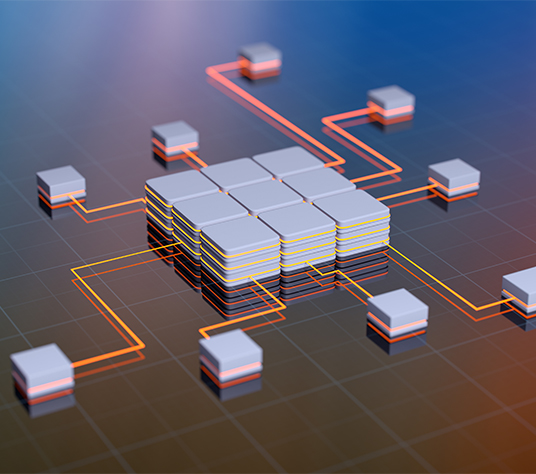E, a seasoned product manager at a thriving consumer goods company, was suddenly in the throes of a crisis. The year 2022 began with an alarming spike in customer complaints, a stark contrast to the relatively calm waters of 2021. The complaints were not limited to one product or region; they were widespread, painting a complex picture that E knew she had to decode.
The company’s traditional methods of analysis, rooted in linear data-crunching, were proving to be insufficient. They pointed to various potential causes: a shipment of substandard raw materials, a series of human errors, unexpected deviations in manufacturing processes, mismatches in component ratios, and even inconsistent additives in packaging materials. The list was exhaustive, but the connections were elusive.
The issue was complex-no single factor was the culprit. E needed to trace and compare the key influencers and their patterns, not just within a single time frame but across the tumultuous period between 2021 and 2022. The domino effect of one small issue escalating into a full-blown crisis was becoming a daunting reality.
To trace the key influencers and their patterns across the tumultuous period between 2021 and 2022, E needed a tool that could capture and analyze the intricate relationships within the data. At Tiger Analytics, we recognized the limitations of conventional approaches and introduced the concept of the Product Knowledge Graph, powered by Neo4j. The concept of the Context Graph, a term we coined to describe a specialized graph-based data structure. This specialized sub-graph from the Master Graph emphasized the contextual information and intricate connections specific to the issue at hand. It provided a visual and analytical representation that weighted different factors and their interrelations.


The Context Graph illuminated the crucial 20% of factors that were contributing to 80% of the problems—the Pareto Principle in action. By mapping out the entire journey from raw material to customer feedback, the Context Graph enabled E to pinpoint the specific combinations of factors that were causing the majority of the complaints. With this clarity, E implemented targeted solutions to the most impactful issues.
What is a Context Graph and Why we need it?
In today’s complex business landscape, traditional databases often fall short in revealing crucial relationships within data. Context Graphs address this limitation by connecting diverse data points, offering a comprehensive view of your business ecosystem.
“The term Context Graph refers to a graph-based data structure (sub-graph from Master Graph) used to represent the contextual information, relationships, or connections between data entities, events, and processes at specific points at the time. It might be used in various applications, such as enhancing natural language understanding, recommendation systems, or improving the contextual awareness of artificial intelligence.”
At Tiger Analytics, we combine graph technology with Large Language Models to build Product Knowledge Graphs, unifying various data silos like Customer, Batch, Material, and more. The power of Context Graphs lies in their ability to facilitate efficient search and analysis from any starting point. Users can easily query the graph to uncover hidden insights, enhance predictive analytics, and improve decision-making across various business functions.
By embracing Context Graphs, businesses gain a deeper understanding of their operations and customer interactions, paving the way for more informed strategies and improved outcomes.


This comprehensive approach is set to redefine the landscape of data-driven decision-making, paving the way for enhanced predictive analytics, risk management, and customer experience.
6 Ways Graphs Enhance Data Analytics

1. Making Connections Clear: If data is like a bunch of dots, by itself, each dot doesn’t tell you much. A Context Graph connects these dots to show how they’re related. This is like drawing lines between the dots to make a clear picture.
2. Understanding the Big Picture: In complex situations, just knowing the facts (like numbers and dates) isn’t enough. You need to understand how these facts affect each other. Context Graphs show these relationships, helping you see the whole story.
3. Finding Hidden Patterns: Sometimes, important insights are hidden in the way different pieces of data are connected. Context Graphs can reveal these patterns. For example, in a business, you might discover that when more people visit your website (one piece of data), sales in a certain region go up (another piece of data). Without seeing the connection, you might miss this insight.
4. Quick Problem-Solving: When something goes wrong, like a drop in product quality, a Context Graph can quickly show where the problem might be coming from. It connects data from different parts of the process (like raw material quality, production dates, and supplier information) to help find the source of the issue.
5. Better Predictions and Decisions: By understanding how different pieces of data are connected, businesses can make smarter predictions and decisions. For example, they can forecast which product combo will be popular in the future or decide where to invest their resources for the best results.
6. Enhancing Artificial Intelligence and Machine Learning: Context Graphs feed AI and machine learning systems with rich, connected data. This helps these systems make more accurate and context-aware decisions, like identifying fraud in financial transactions or personalizing recommendations for customers.
The power of Context Graphs in solving complex business problems is clear. By illuminating hidden connections and patterns in data, these graph-based structures offer a new approach to decision-making and problem-solving. From E’s product quality crisis to broader applications in predictive analytics and AI, Context Graphs are changing how businesses understand and utilize their data.
In Part 2 of this series, we’ll delve deeper into the practical aspects, exploring a framework approach to implementing these powerful graph structures in your organization.





